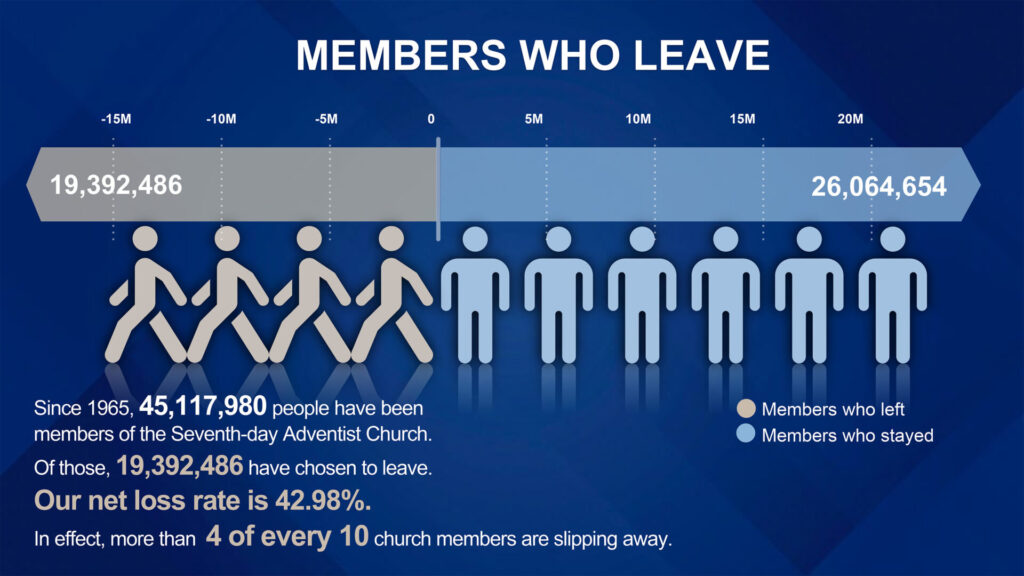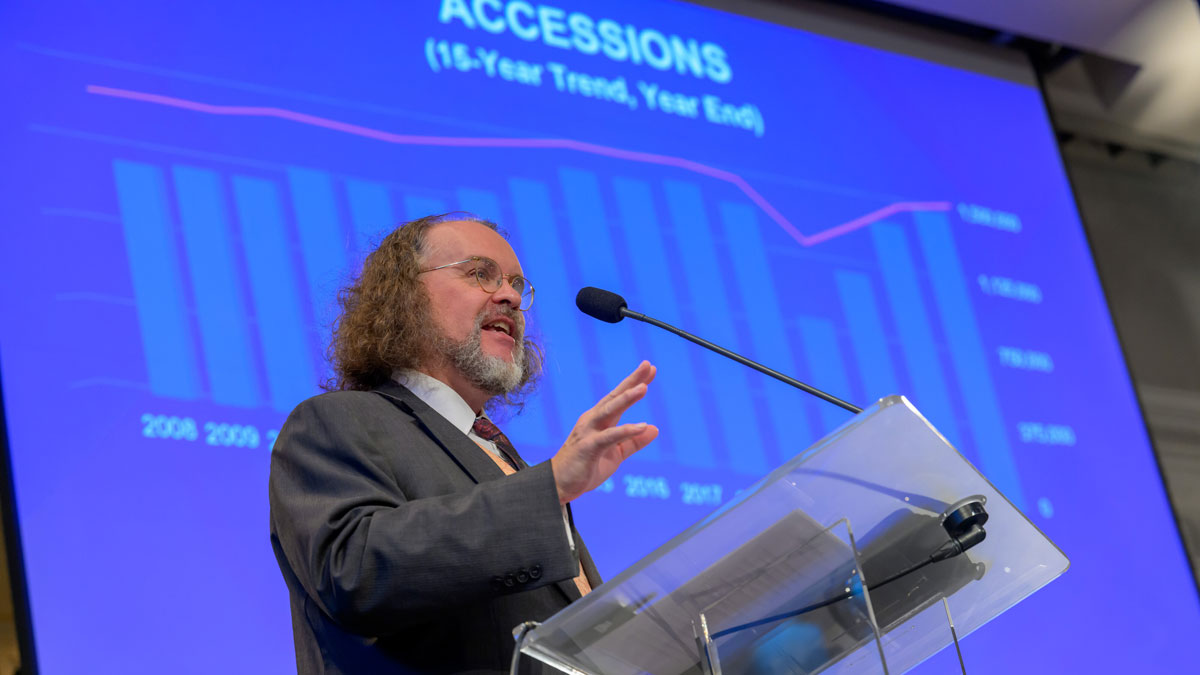A total of 1.465 million new members were added to the Seventh-day Adventist Church in 2023. This information was given to members of the General Conference Executive Committee by the director of the Office of Archives, Statistics, and Research, Dr David Trim, when he presented the Annual Statistical Report on October 13.
Trim pointed out that “2023 saw the highest number of net accessions of any year in church history, exceeding the 1.383 million added in 2018.” The number of accessions is now back on the same level as it was prior to the challenging years (2020 and 2021) during the covid-19 pandemic.
Although church members may rejoice over a large number of new members added to the fellowship, church growth is a function of both accessions and losses. In 2023, 836,905 persons who were alive and well, decided to leave the Seventh-day Adventist Church. That was the third highest year for net losses, with the peak in 2019 when the statistics show 1,107,514 persons leaving our fellowship.
Dr Trim showed a slide in his presentation displaying membership data for the 59 years since 1965. In almost six decades the church has accepted 45,117,980 persons into membership. In the same period 19,392,486 have chosen to leave.
“More than 4 of every 10 church members are slipping away”, said Trim while urging both General Conference Executive Committee members and church members to “be their brother’s keeper, and their sister’s too.”

An important metric to watch is how church membership is developing compared to population growth in the world.
“After all, if we were growing but the population were growing faster than us, our growth would be deceptive—it would be like trying to go up a down escalator”, Trim said.
Dr Trim showed that the church is making progress in this regard. As of December 31, 2023, there was one Seventh-day Adventist for every 350 persons in the world. As recently as the year 2000, the global ratio was 519 people to every member and in 2011 the was 400 to 1.
Pastor Glenn Townend, South Pacific Division (SPD) president, noted the SPD’s unique position, with the highest ratio of Adventists to the general population—one for every 57 people—but emphasised the need to support other divisions with more challenging demographics.
“The SPD has a partnership with the Southern Asia Pacific Division (SSD) who have millions of people who are Buddhist, Muslim and Hindu,” he said. “We will be meeting in their territory next month to discuss and vote our strategic plan, which will include a focus on mission. We will see mission opportunities and actually be involved in mission. We will be sending more missionaries there.”
How many members are needed to lead one person to baptism?
“This is a key statistic, because it tells us how effective our church is in reaching people”, Trim told Executive Committee members. The answer is 30 if we look at the numbers for 2023. Globally the church needs 30 members to lead one person to baptism. But this number varies greatly around the globe.
Trim pointed out that the members-to-accessions ratio identifies “unions that face missional challenges, irrespective of the population in a union.” In the West-Central Africa Division the union with the greatest mission challenge is the Northern Ghana Union Conference, with 24 members to every accession.
The union within the South Pacific Division highlighted by Dr Trim was the New Zealand Pacific Union, with 45 members to every accession. The SSD region highlighted was the Malaysian Union Mission with 36:1.
At the other end of the spectrum, we find the South-Central Indian Union Section in the Southern Asia Division with 231 members to every accession.
These numbers highlight the huge need for “missionaries and resources deployed within divisions but also between divisions, if we are to reach the world with the third angel’s message”, Dr Trim said in closing.
The original version of this story was posted on the Norwegian Union Conference website.






